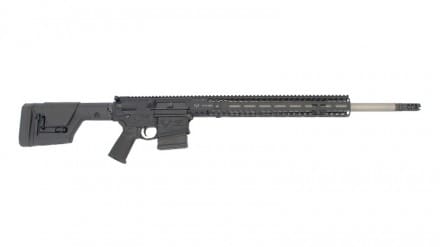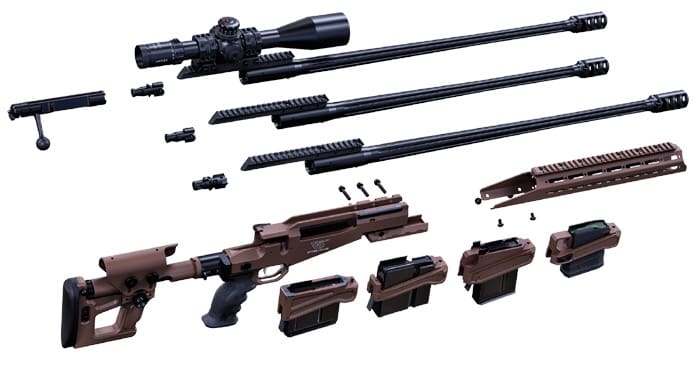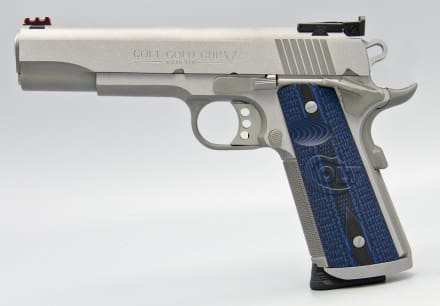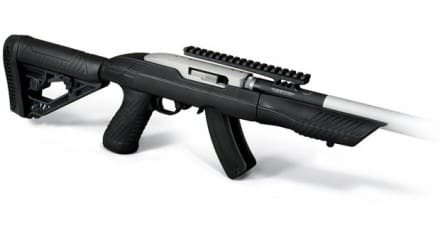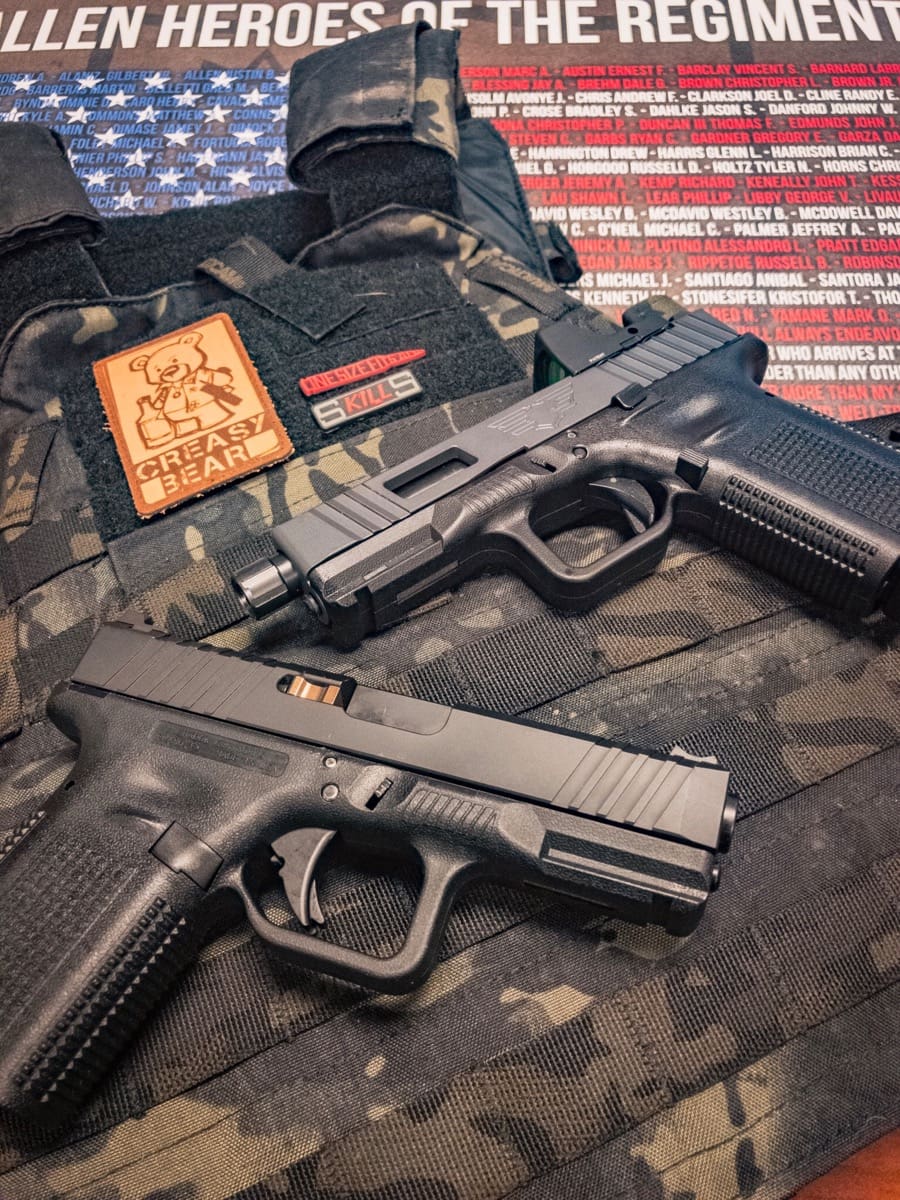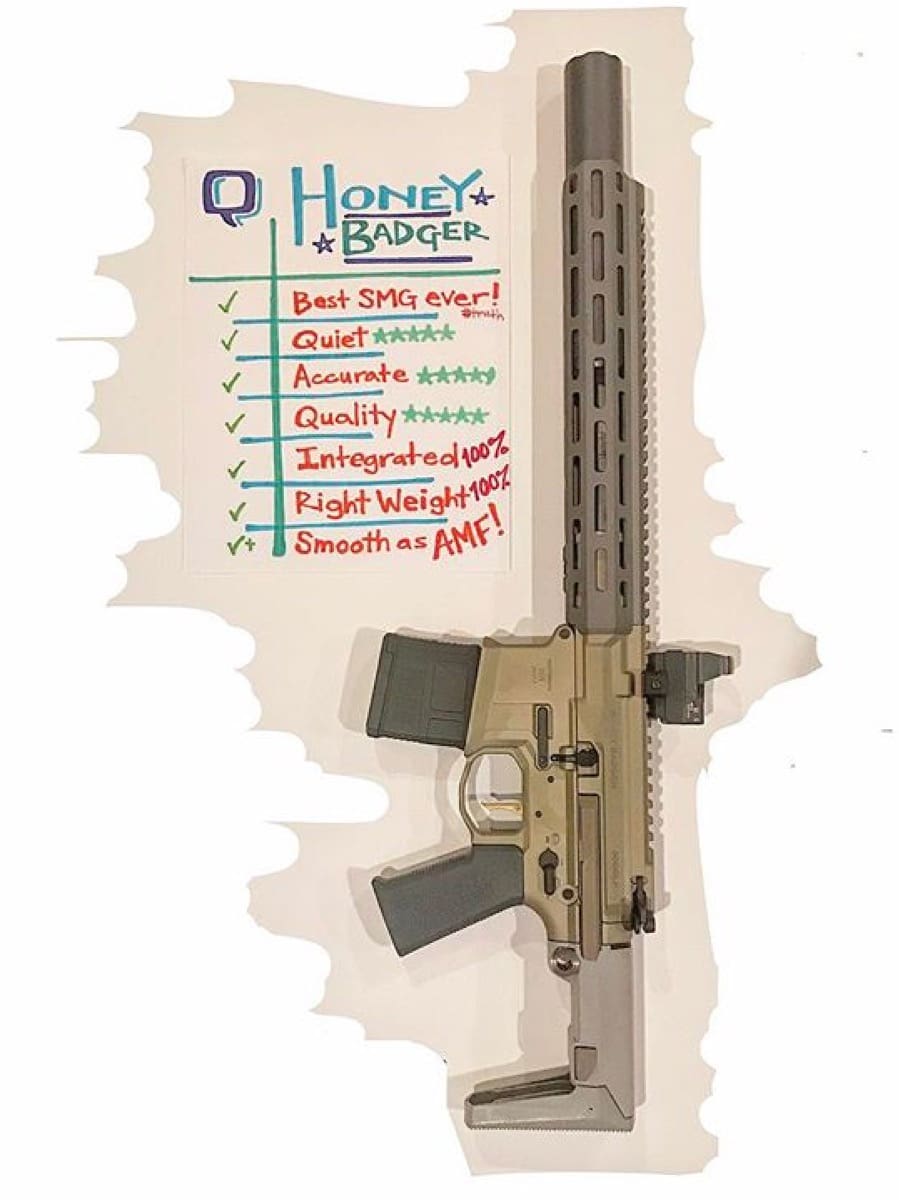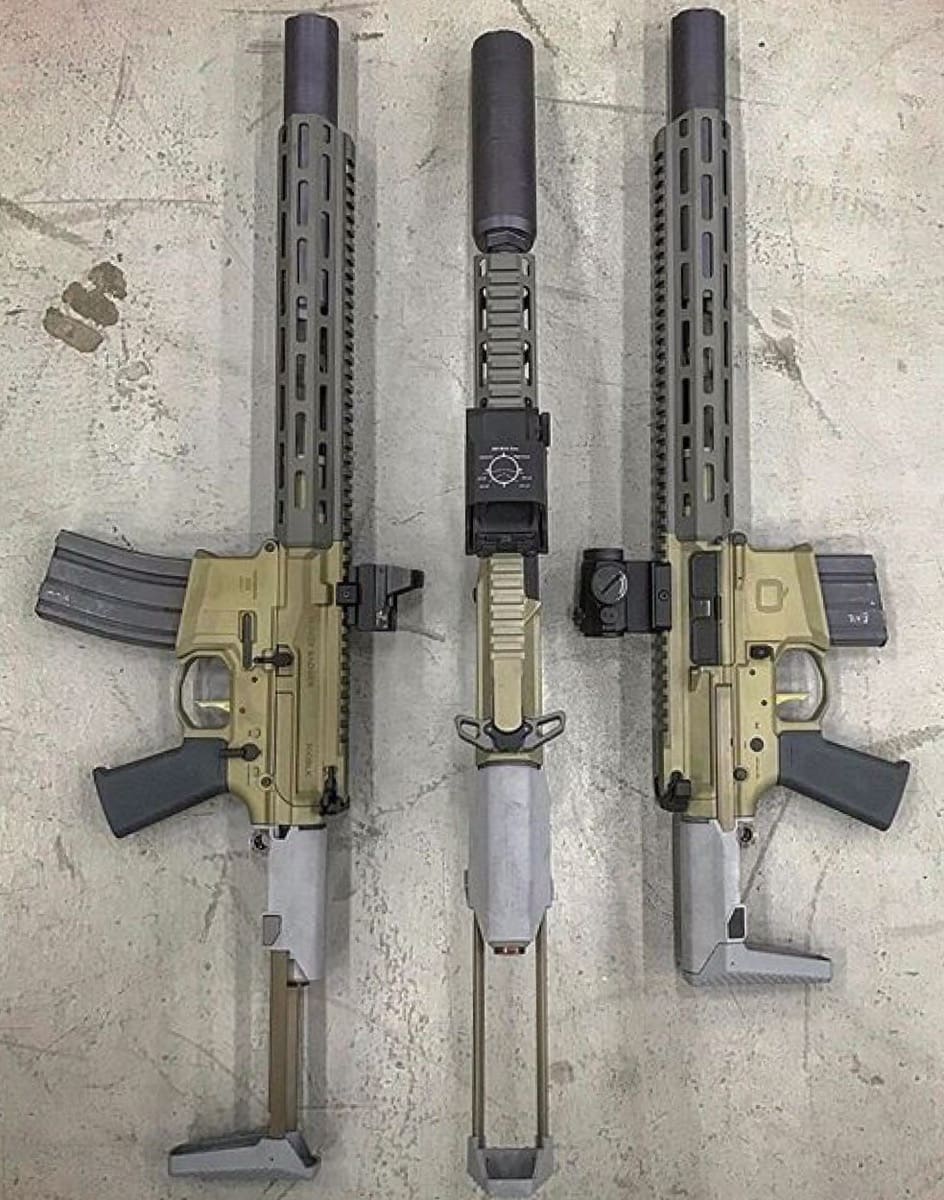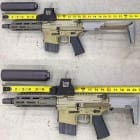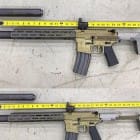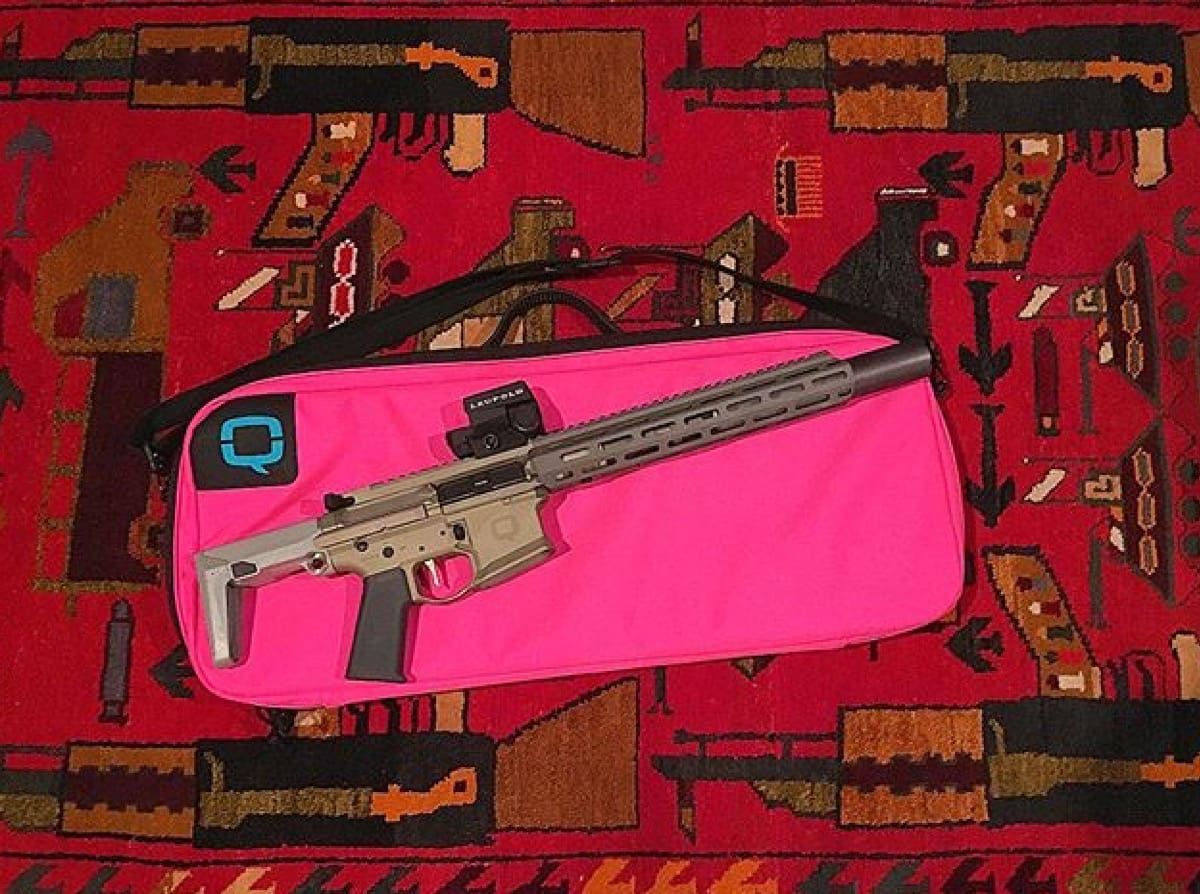New Berlin, WI – 20APRIL2017 – American Defense Mfg® is proud to release for immediate availability the following new mount products in addition to our line of UIC Carbines. The AD-TP (Tripod Mount), AD-SM-01 (Co-Witness) / AD-SM-02 (Lower 1/3 aka SOCOM) Gen 2 Swing Off Magnifier Mount, AD-BP-P2 (Harris Bipod Mount), and the AD-GP (Go Pro Mount). These mounts feature our patented QD Auto Lock™, which provide a positive locking that requires 2 intentional actions to open. American Defense Mfg® mounts are precision machined to provide a positive lock up and consistent return to zero. Furthermore, the American Defense Mfg® line of mounts do not require any tools to adjust tension or to remove from the weapon platform. For more information visit www.admmfg.com or your favorite retailer!
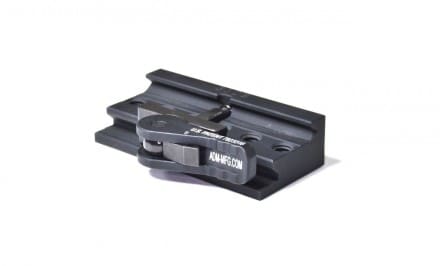
Tripod Mount MSRP 73.95
Description
The AD-TP Tripod Mount enables you to attach a standard camera tripod baseplate (1/4×20) to your railed forearm. It is precision machined from 6061 T6 aluminum and finished in hard coat T3 Mil-Spec anodize. It features the Patented QD Auto Lock™ Lever system to accommodate both in spec and out of spec rail systems.
Features
Six 1/4×20 threaded holes for mounting to your standard camera tripod baseplate.
The AD-TP tripod mount features the Patented QD Auto Lock™ Lever system, which has the following advantages:
Does not require proprietary tools for adjustment.
Can be adjusted with your finger or a flat blade screwdriver.
Lever can be configured to lock to the front or the rear.
Superior clamping surface to insure maximum rail engagement.
Materials & Construction
The AD-TP tripod mount is precision CNC machined from a block of 6061 T6 aluminum and finished in hard coat type 3 Mil-Spec anodize for a rock hard lasting finish.
Precision machined from 6061 T6 Aluminum.
Hard coat anodized for a lifetime of performance.
Fully adjustable to fit both in spec and out of spec rail systems.
American Defense MFG, LLC. products feature a lifetime warranty.
Features the Patented QD Auto Lock™ Lever system.
Made with pride in the U.S.A.
Specifications
The AD-TP tripod mount has the following specifications:
Weight: 3.60 ounces
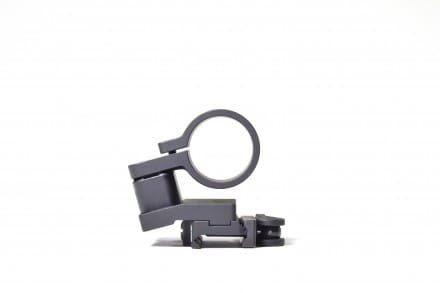
Magnifier Swing Off Mount GEN 2 MSRP 135.00
Description
The AD-SM-02 GEN 2 Magnifier Swing Off Mount features a lower 1?3rd co-witness (Co-Witness model available) when used on an AR15, M16, M4 flattop with Mil-Spec size iron sights. The GEN 2 Swing Mount features user adjustable tension and enhanced geometry on the swing arm mechanism. It enables the operator to flip the magnifier out of view for an unmagnified sight picture. It is configurable for a right or left direction of flip. Fits Magnifiers with a 30mm tube. It is precision machined from 6061 T6 aluminum and finished in hard coat T3 Mil-Spec anodize. It features the Patented QD Auto Lock™ Lever system to accommodate both in spec and out of spec rail systems.
Features
The AD-SM-02 Magnifier Swing Off Mount features the Patented QD Auto Lock™ Lever system which has the following advantages:
Does not require proprietary tools for adjustment.
Can be adjusted with your finger or a flat blade screwdriver.
Lever can be configured to lock to the front or the rear.
Superior clamping surface to insure maximum rail engagement.
Materials & Construction
The AD-SM-02 Magnifier Swing Off Mount is precision CNC machined from a block of 6061 T6 aluminum and finished in hard coat type 3 Mil-Spec anodize for a rock hard lasting finish.
Precision machined from 6061 T6 Aluminum.
Hard coat anodized for a lifetime of performance.
Fully adjustable to fit both in spec and out of spec rail systems.
American Defense MFG, LLC. products feature a lifetime warranty.
Features the Patented QD Auto Lock™ Lever system.
Made with pride in the U.S.A.
Specifications
The AD-SM-02 Magnifier Swing Off Mount has the following specifications:
Weight: 4.8ozs.
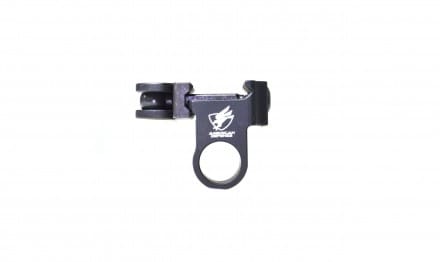
Harris Swivel Bipod Mount MSRP 71.50
Description
The AD-BP-P2 Bipod Mount enables you to attach a Harris-S, Swivel bipod to your railed forearm. Not compatible with the Tac Lever ( Lever interferes with the bipod itself ). It is precision machined from 6061 T6 aluminum and finished in hard coat T3 Mil-Spec anodize. It features the Patented QD Auto Lock™ Lever system to accommodate both in spec and out of spec rail systems. The mount includes two different sized delrin sleeves to accommodate both Harris and other brand bipods that swivel.
Features
The AD-BP-P2 bipod mount features the Patented QD Auto Lock™ Lever system that has the following advantages:
Does not require proprietary tools for adjustment.
Can be adjusted with your finger or a flat blade screwdriver.
Lever can be configured to lock to the front or the rear.
Superior clamping surface to insure maximum rail engagement.
Materials & Construction
The AD-BP-P2 bipod mount is precision CNC machined from a block of 6061 T6 aluminum and finished in hard coat type 3 Mil-Spec anodize for a rock hard lasting finish.
Precision machined from 6061 T6 Aluminum.
Hard coat anodized for a lifetime of performance.
Fully adjustable to fit both in spec and out of spec rail systems.
American Defense MFG, LLC. products feature a lifetime warranty.
Features the Patented QD Auto Lock™ Lever system.
Made with pride in the U.S.A.
Specifications
The AD-BP-P2 bipod mount has the following specifications:
Weight: 2.60 ounces
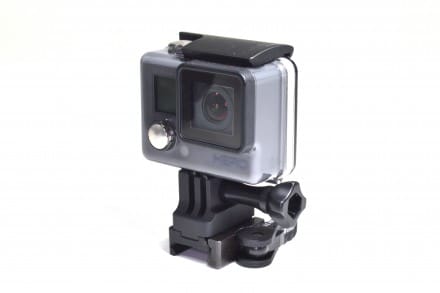
GoPro Mount MSRP 75.00
Description
The AD-GP GoPro Mount enables you to attach a GoPro Camera to your railed forearm. It is precision machined from 6061 T6 aluminum and finished in hard coat T3 Mil-Spec anodize. It features the Patented QD Auto Lock™ Lever system to accommodate both in spec and out of spec rail systems.
Features
Solid mounts the GoPro camera at a 90* angle
The AD-GP GoPro mount features the Patented QD Auto Lock™ Lever system that has the following advantages:
Does not require proprietary tools for adjustment.
Can be adjusted with your finger or a flat blade screwdriver.
Lever can be configured to lock to the front or the rear.
Superior clamping surface to insure maximum rail engagement.
Materials & Construction
The AD-GP GoPro mount is precision CNC machined from a block of 6061 T6 aluminum and finished in hard coat type 3 Mil-Spec anodize for a rock hard lasting finish.
Precision machined from 6061 T6 Aluminum.
Hard coat anodized for a lifetime of performance.
Fully adjustable to fit both in spec and out of spec rail systems.
American Defense MFG, LLC. products feature a lifetime warranty.
Features the Patented QD Auto Lock™ Lever system.
Made with pride in the U.S.A.
Specifications
The AD-GP GoPro mount has the following specifications:
Weight: 2.60 ounces


